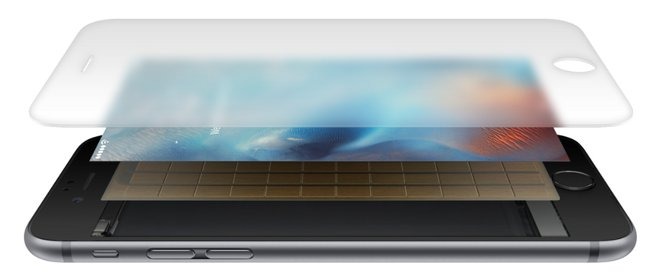Haptic feedback technology developer Immersion on Thursday announced a two-pronged legal attack against Apple for allegedly infringing on its patents with haptic systems embedded in Apple Watch and iPhone.
In both its U.S. International Trade Commission complaint and a lawsuit filed in a Delaware district court, Immersion alleges Apple's iPhone 6, iPhone 6s and Apple Watch product lines infringe on

three asserted patents covering various haptic feedback technologies. AT&T is also named as a defendant in both cases.
Specifically, Apple's iPhone 6, iPhone 6 Plus, iPhone 6s, iPhone 6s Plus and Apple Watch allegedly infringe on Immersion's U.S. Patent Nos. 8,619,051 for "Haptic Feedback System with Stored Effects" and 8,773,356 for "Method and Apparatus for Providing Tactile Sensations." The iPhone 6s series is being singled out for infringing upon U.S. Patent No. 8,659,571 covering "Interactivity Model for Shared Feedback on Mobile Devices."
"While we are pleased to see others in the industry recognize the value of haptics and adopt it in their products, it is important for us to protect our business against infringement of our intellectual property in order to preserve the ecosystem we have built and the investments that we have made in continuing to advance haptic experiences," said Immersion CEO Victor Viegas. "We will vigorously defend the intellectual property we have developed when it is infringed."
While Apple's portable devices have long featured vibration functions for phone call and message alerts, the company announced a more advanced haptic feedback system with Apple Watch in 2014. Dubbed the "Taptic Engine," Apple's solution incorporates a refined linear actuator driven and sophisticated software capable of reproducing taps, bumps and other tactile events to deliver an immersive sensory experience.
Following Apple Watch, Apple introduced similar technology, called "Force Touch," in its MacBook lineup and later the Magic Trackpad 2 peripheral. In this case the haptic feedback engine is used to simulate the click of a trackpad, not necessarily tactile feedback triggered by an API.
Apple debuted its most comprehensive haptic experience in 3D Touch on iPhone 6s and 6s Plus. The solution combines a force-sensitive display, deeply integrated iOS 9 control software and a linear vibratory motor (Taptic Engine) to create what is in effect an entirely new GUI layer. 3D Touch enables new z-axis gestures that trigger features like Peek and Pop, Quick Actions and cross-app content previews, all with contextual vibratory feedback.
Immersion seeks compensatory damages in its lawsuit while adding further pressure to settle with the simultaneous ITC complaint, which seeks a U.S. sales injunction on infringing products.
No comments :
Post a Comment